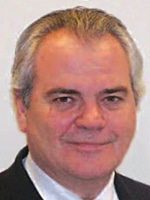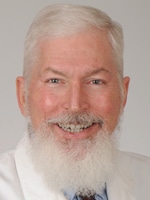June 2021—A brief update on SARS-CoV-2 variant testing and then a look at the latest on the laboratory labor struggle. That’s what Compass Group members provided when they spoke May 4 in another of their monthly calls led by CAP TODAY publisher Bob McGonnagle.
“We’ve accepted that if we’re going to solve the [labor] issue,” said Sam Terese of Alverno Laboratories, “we’ll have to create the workforce. They’re not coming to us in any other way.”
With McGonnagle and Terese were Bob Stallone and James Crawford, MD, PhD, Northwell; Sterling Bennett, MD, MS, Intermountain; John Waugh, MS, MT(ASCP), Henry Ford; Peter Dysert, MD, Baylor Scott & White; Steven Carroll, MD, PhD, Medical University of South Carolina; Stan Schofield, MaineHealth; Gregory Sossaman, MD, Ochsner; Clark Day, Indiana University; Diana Kremitske, MS, MHA, MT(ASCP), Geisinger; Julie Hess, AdventHealth; Terrence Dolan, MD, Regional Medical Laboratory; and Dan Ingemansen, Sanford.
The Compass Group is an organization of not-for-profit IDN system lab leaders who collaborate to identify and share best practices and strategies. Here is what they said.
Bob Stallone, what do the COVID and the laboratory situations look like to you now as we convene in early May?
Bob Stallone, senior advisor, Northwell Health laboratories, New York: It depends on your perspective. In Florida, where I am now, people are sitting at the tiki bars shoulder to shoulder with others with no acknowledgment that COVID is serious. People seem satisfied to see thousands of new cases daily. In New York, even though things are much better there, with the positivity rate in the two percent range, people were still careful.

Stallone
From the laboratory standpoint, it’s interesting. I’ve been working with Northwell in a consulting senior advisory role, and the projection is that operating costs for our lab group will increase from $450 million to $600 million a year at the central laboratory. And margins probably went 60 percent above what was planned in the projections—despite all the additional expense that COVID brought to the table.
To me, it’s always “don’t let a good crisis go to waste.” From a business perspective, from a positioning of the laboratory in its role in the community and in the health system, it’s been a fantastic opportunity. Too bad there has to be a pandemic to make that happen, but I hope everyone has been able to achieve that positioning within their own health systems and communities to demonstrate what laboratories can do.
We shouldn’t look at this as something that’s ending despite the numbers declining. I’m looking at it as our now having a higher point to jump off from. We should be looking at high-volume testing at lower cost and more accessibility to people, and we should be prepared for other types of public high-volume testing in the future, including the variants, even moving toward more accessibility for testing for STDs and for other viral panels.
We’ve seen many new lab players spring into action to do COVID testing. In a recent CAP TODAY roundtable with the people who do most of the anatomic pathology billing in the country, there was talk about how their clients immediately put in PCR machines and began billing more PCR COVID testing than they were doing surgical pathology, which is quite an achievement (CAP TODAY, April 2021). I take that as a mixed message—I have a feeling we’ll be able to buy a lot of used PCR equipment within the next year or so once the reimbursement for COVID tests comes down. Sterling Bennett, what do you think about that?
Sterling Bennett, MD, MS, medical director, Intermountain Healthcare central laboratory, Salt Lake City: I think we’re not the only ones who believe you should never let a good crisis go to waste. People saw a lot of opportunity to get into the testing game. The thing we found most disconcerting is that many of the people who jumped in didn’t have an appreciation for how much expertise is required to perform testing in a reliable and accurate way. I guess we’ve made it look so easy over the years that everybody and their dog thinks they can get into the act to do it as well as we’ve done it.
When we spoke last month Michigan had become a hotspot. I know that the Indian variant was found in Michigan north of Lansing. John Waugh, give us the current state on the ground.
John Waugh, MS, MT(ASCP), system VP, pathology and laboratory medicine, Henry Ford Health System, Detroit: Our rates are coming down just this week. The U.K. variant still accounts for about 60 percent of the isolates recovered. We are now beginning to do the sequencing at Henry Ford, and we’re also sending samples to the state of Michigan.
Does anyone else have experience with setting up next-generation sequencing to test for variants?
Dr. Bennett (Intermountain): We have not set up NGS, but we have gotten some of the Thermo Fisher primers for individual mutations and we’re just getting our feet wet with that.
Peter Dysert, you have NGS within the Baylor Scott & White system. Have you applied that technology and capacity to COVID variants?
Peter Dysert, MD, chief, Department of Pathology, Baylor Scott & White Health, Dallas: We are still in the process of validating our machines. We’ve been relying on the state and the state is slow to give us the answers back, although it’s down to under a month now. That’s an improvement.
Sam Terese, what have you decided at Alverno in terms of in-house NGS capacity to run down some of the variants?
Sam Terese, president and CEO, Alverno Laboratories, Illinois and Indiana: Our view of it is to not go down that path at this time. It would displace some of our activities in the oncology space, and we’re still debating what it means clinically and how it impacts care. We’re not an epidemiology laboratory. There are challenges with the state labs in their reporting and getting information back to clinicians, but Rush University Medical Center, a large academic medical center in Chicago, set up a program as well. So it’s not an area we look to evolve and move into.
You have a big effort in next-gen sequencing outside of COVID, correct?
Sam Terese (Alverno): Yes, we launched our program and we’re hoping in the next 30 days to launch a 500-gene panel as well. Reimbursement is still a challenge. We partnered with a group to do our preauthorization work. For reporting, the summary report is pretty easy to move through the IT systems, but you have a 50-page report that you have to get out somehow. For that, we had to partner with a few other entities.

Dr. Carroll
Steve Carroll, what are you doing with COVID variants in South Carolina?
Steven Carroll, MD, PhD, chair, Department of Pathology and Laboratory Medicine, Medical University of South Carolina: We have been sequencing COVID-19 genomes for several weeks. We have the same issues on reimbursement, but our problem is the state has limited capacity to do it. Since we’re a state medical school, we’re doing it as a matter of public health. We’ve been seeing some interesting shifts. Julie Hirschhorn in my department has pulled a lot of data together and we’ve watched it evolve from where we were mainly seeing the South African variant and where we had a hodgepodge of variant to the U.K. variant having now taken over the state.
In this work are you finding any particular morbidity or even mortality connected to individual variants in your patient population?
Dr. Carroll (MUSC): Not so far. We’ve also been looking at whether the people who had been vaccinated and then turned up COVID positive were infected with variants, and we haven’t found evidence of that either. Of the first 12 such cases we looked at, only one had a variant.
Stan Schofield, what is your experience with the clinical implications of variants? What demands are you getting from clinicians and/or patients?
Stan Schofield, president, NorDx, and senior VP, MaineHealth: U.K. B.1.1.7 is the dominant strain in Maine. We are not doing NGS in-house and have no intention of doing it in-house. All those go to the state laboratory under contract. The infectious disease doctors have medical curiosity, but we don’t have a variant that has greater mortality or morbidity at the moment.
We don’t have NGS capacity equipment or personnel to try to do this, and there’s no payment for it. So we’re staying with our oncology program, and those patients are getting our NGS resources and service.
The Indian variant has been identified in the United States. Is this one a particular worry?
Stan Schofield (MaineHealth): It’s a concern. It will be here; it’s just a question of how soon. The U.K. B.1.1.7 variant started in September last year and we started picking it up in late March. Trips to the northeast from the U.K. are much more frequent than from India. It is a big concern, but I don’t have enough information to advise or warn with any certainty.
Greg Sossaman, what is the situation in New Orleans?
Gregory Sossaman, MD, system chairman and service line leader, pathology and laboratory medicine, Ochsner Health, New Orleans: Although Ochsner has done a fabulous job of making the vaccinations available, we’re one of the states that’s lagging behind nationally. There’s a lot of vaccine hesitancy in our population. My fear is that as we have more complacency and fewer mask mandates, we’re going to see rising cases again if we can’t get our vaccination rate up. So we’re preparing for more testing to come; I hope it doesn’t occur but better to be prepared.
There seems to be a question about whether, with this vaccine hesitancy, we can reach herd immunity.
 CAP TODAY Pathology/Laboratory Medicine/Laboratory Management
CAP TODAY Pathology/Laboratory Medicine/Laboratory Management
